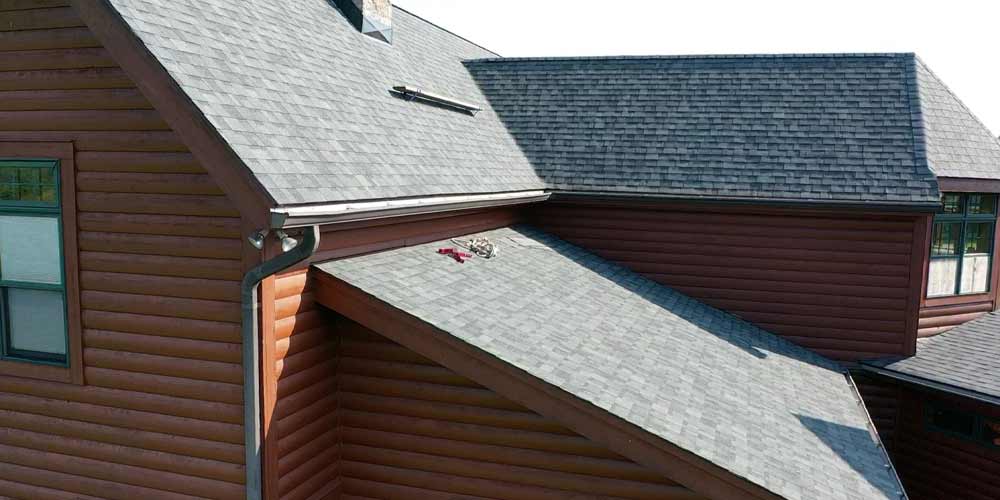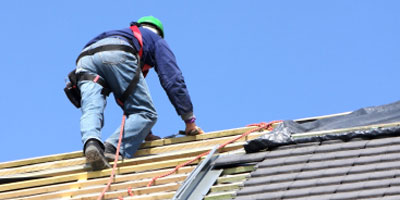Need same-day roofing help? Contact Austin roofers now!
Need same-day roofing help? Contact Austin roofers now!
Blog Article
The Ultimate Overview to Understanding Different Sorts Of Roof Tile Materials
Recognizing the numerous kinds of roof tile materials is critical for property owners looking for to make informed choices that align with their requirements and choices. From the economical nature of asphalt tiles to the style of timber and the durability of metal and slate, each option offers distinctive benefits and difficulties.

Asphalt Tiles
Asphalt shingles are a popular selection for house owners as a result of their cost, sturdiness, and simplicity of installation. Made up of a fiberglass mat saturated with asphalt and covered with mineral granules, these tiles supply reliable security against climate components while making sure a long life expectancy.
There are 2 key sorts of asphalt tiles: three-tab and building. Three-tab tiles are lightweight, economical, and easy to install, making them an usual option for budget-conscious home owners. Alternatively, building shingles include a more dimensional appearance, giving improved curb allure and boosted wind resistance, frequently at a somewhat higher price.
One of the essential benefits of asphalt roof shingles is their flexibility; they come in a variety of colors and styles, allowing homeowners to conveniently match their roofing with the overall visual of their home. Furthermore, they generally have a life expectancy varying from 20 to 30 years, depending on the high quality and installation techniques.
Maintenance is normally very little, although routine assessments and cleansing can extend the life of the roof covering. Generally, asphalt roof shingles remain a sensible and dependable roof covering remedy, balancing price, performance, and aesthetic charm for a broad series of household applications.
Timber Shingles
Timber roof shingles offer a natural visual that attract several homeowners seeking a classic, rustic appearance for their roof coverings. Commonly crafted from cedar, yearn, or redwood, these roof shingles offer a distinct charm and can enhance the overall character of a home. Their natural shades and textures can create a warm and inviting environment, making them a prominent option in different architectural styles.
One considerable benefit of wood roof shingles is their insulating buildings, which can aid control interior temperature levels. Timber tiles need normal maintenance to prevent concerns associated to moisture, such as rot and mold and mildew.
Regardless of their aesthetic allure, timber roof shingles may not appropriate for all climates, especially in locations susceptible to wildfires. Property owners should likewise take into consideration the life-span of timber roof shingles, which commonly ranges from 20 to 40 years, depending on the type of wood and maintenance methods. In general, wood shingles can be an excellent try this web-site selection for those who focus on appeal and all-natural products in their roof covering decisions.
Metal Roof Covering
Steel roofing has obtained appeal among house owners and building contractors alike because of its resilience, durability, and low upkeep needs. Offered in a selection of materials, consisting of steel, aluminum, copper, and zinc, metal roofings provide convenience in design and visual charm. They can be found in various styles, from standing seam to steel shingles, permitting property owners to select a choice that enhances their architectural vision.
One of the primary benefits of steel roof covering is its extraordinary life-span, typically exceeding 50 years with correct care. This durability causes reduced replacement prices in time, making it a cost-efficient option. Metal roof coverings are resistant to severe climate conditions, including hail storm, wind, and snow, which boosts their dependability.
Along with their durability, steel roofing systems are eco-friendly, as they are usually made from recycled materials and can be reused at the end of their life process. They also reflect solar convected heat, adding to power effectiveness and reduced cooling costs. In general, steel roof covering integrates aesthetic appeal with practical advantages, making it a significantly favored option in modern construction.
Slate Tiles

In addition, slate roof shingles are fireproof and do not warp or become weak in time, adding to their appeal for house owners seeking a dependable roof service. The aesthetic versatility of slate is another considerable advantage; it is available in various shades and appearances, permitting a personalized appearance that can enhance any building design.
Setup of slate roof shingles, however, requires specialized skills as a result of their weight and the requirement for accurate alignment. This can lead to greater preliminary expenses contrasted to other roof covering products. The long-lasting worth of slate, both in terms of durability and prospective power effectiveness, usually offsets these upfront expenses.
Synthetic Choices
As house the original source owners progressively look for choices to standard products, synthetic roof options have acquired popularity for their flexibility and cost-effectiveness. These ingenious materials use a mix of aesthetics, performance, and resilience, making them an attractive selection for a large range of building styles.
Synthetic roof covering tiles are commonly made from a mix of polymers and recycled products, enabling suppliers to create items that imitate the look of natural materials like slate or wood without the associated upkeep difficulties. roofer contractors. One of the most significant advantages of synthetic roof shingles is their lightweight read nature, which minimizes the structural lots on a home. Furthermore, they are engineered to stand up to extreme weather, providing superior resistance to wind, hailstorm, and UV radiation
On the whole, artificial roof covering materials represent a clever financial investment for those looking to improve their residential or commercial property's aesthetic appeal while making certain lasting reliability and sustainability. As modern technology continues to development, these choices are most likely to progress, better solidifying their location in the roofing market.
Conclusion
To conclude, the selection of roof tile materials significantly affects the visual, longevity, and upkeep of property frameworks. Asphalt tiles supply price and convenience of setup, while timber tiles provide natural beauty. Metal roof covering provides phenomenal longevity, and slate shingles are renowned for their longevity and beauty. Synthetic alternatives incorporate various advantages, satisfying varied property owner preferences. Eventually, recognizing these materials enables informed decision-making, ensuring that options align with budgetary constraints and ecological considerations.
Report this page